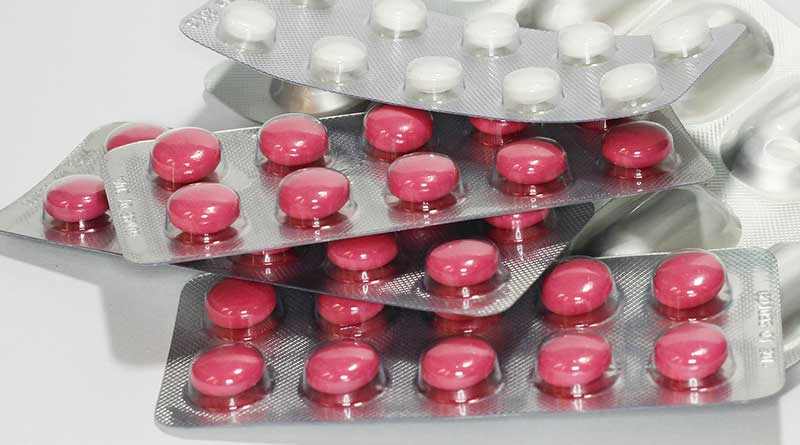Statins

(The British newspaper, "i", published a shorter version of this article on 11th December 2018.)
The headlines on 8th December 2018 were “Stronger statins ‘could save 12,000’” (Ref 1) and “Increasing statins dose and patient adherence could save more lives” (Ref 2). The article behind these headlines was published in the JAMA open network. It was entitled: “Association of a combined measure of adherence and treatment intensity with cardiovascular outcomes in patients with atherosclerosis or other cardiovascular risk factors treated with statins and/or ezetimibe” (Ref 3).
The study set out to examine how adherence and prescription intensity was associated with cardiovascular disease (CVD) events in patients recently given statins and/or ezetimibe. (Ezetimibe is a drug that decreases the absorption of cholesterol in the small intestine, which lowers blood cholesterol levels). This means that the study was trying to see if people who took their statins/ezetimibe as prescribed and if people who were on stronger doses of these drugs had fewer CVD incidents.
The funding and conflicts
The study concluded that people should take statins and take them at the highest dose. The study was funded by Amgen Europe GmbH. The conflicts of interest declared by the authors were as follows:
“Conflict of Interest Disclosures: Dr Khunti reported receiving personal fees from Amgen, AstraZeneca, Bayer, Lilly, Merck Sharp & Dohme, Novartis, Novo Nordisk, Roche, Sanofi, and Servier; reported receiving grants from AstraZeneca, Boehringer Ingelheim, Lilly, Merck Sharp & Dohme, Novartis, Novo Nordisk, Pfizer, Sanofi, and Roche; reported serving as a consultant for Novartis, Novo Nordisk, Sanofi, Lilly, AstraZeneca, Servier, Merck Sharp & Dohme, Boehringer Ingelheim, Amgen, Bayer, and Abbot; and reported serving as a speaker for Novartis, Novo Nordisk, Sanofi, Lilly, AstraZeneca, Merck Sharp & Dohme, and Boehringer Ingelheim. Dr Danese reported receiving grants from Amgen. Dr Kutikova reported owning Amgen stock. Dr Catterick reported owning Amgen stock. Dr Sorio-Vilela reported owning Amgen stock. Dr Gleeson reported receiving grants from Amgen. Dr Kondapally Seshasai reported receiving personal fees from Amgen, reported serving as a consultant for Amgen, and reported receiving grants from Kowa and Sanofi. Dr Brownrigg reported receiving personal fees from Amgen and reported serving as a consultant for Amgen. Dr Ray reported receiving personal fees from lectures from Amgen, Sanofi, Regeneron, Medicines Company, Kowa, Cipla, Algorithm, Boehringer Ingelheim, Novo Nordisk, Takeda, and Astra Zeneca; reported serving as a consultant for Amgen, Sanofi, Regeneron, Medicines Company, Cerenis, Lilly, Ionis Pharma, Akcea, Esperion, and AbbVie; and reported receiving grants from Sanofi, Regeneron, Amgen, Merck Sharpe & Dohme, and Pfizer through his institution.”
The study
This was a retrospective study. This means that no one was recruited into this study. The researchers simply looked at some data that were already available. The data used were from the Clinical Practice Research Datalink (CPRD) from between January 2010 and February 2016. The people reviewed for this article were “newly treated patients” who received their first statin and/or ezetimibe prescription between January 1 2010 and December 31 2013 and who received an additional prescription for statins and/or ezetimibe during the following year. Of the 29,797 people meeting the criteria set by the researchers: 16,701 had documented cardiovascular disease (CVD); 12,422 had type 2 diabetes without CVD and 674 had chronic kidney disease without CVD.
The rest of this note is going to focus on the 16,701 people with CVD, as these are the people behind the headlines. eTable 3 in the supplementary file reported that 79% of these people had had a CVD event in the previous year – 55% had had an acute CVD event – and so these patients were in seriously bad shape at the baseline of the study.
Adherence was assessed annually as the proportion of days covered (PDC). Adherence was defined as taking one’s meds for 80% of the days or more. Anything less than this (e.g. 79% PDC) was considered non-adherence. Treatment intensity was categorized by the reduction in LDL cholesterol. This was also assessed annually. A 30% reduction in LDL cholesterol was seen as low intensity treatment. A 30-50% reduction in LDL cholesterol was seen as moderate intensity treatment and greater than, or equal to, a 50% reduction was seen as high intensity treatment. Given that the starting LDL cholesterol for the 16,701 people averaged just 128 mg/dL (3.3 mmol/L) and given that the starting total cholesterol averaged just 205 mg/dL (5.3 mmol/L), I cannot imagine the side effects suffered by those who managed to achieve the high intensity goal.
The rest of this article is available to site subscribers, who get access to all articles plus a weekly newsletter.
To continue reading, please login below or sign up for a subscription. Thank you.



